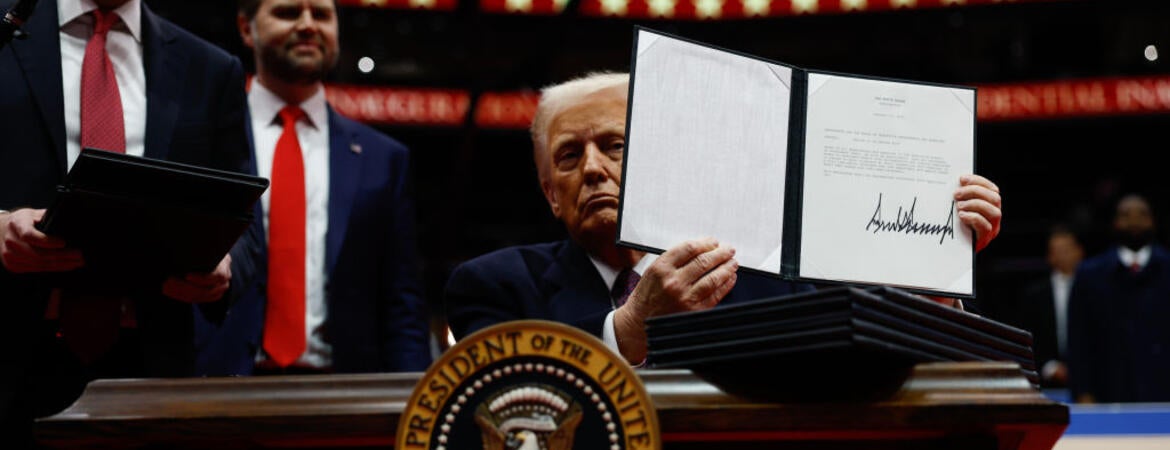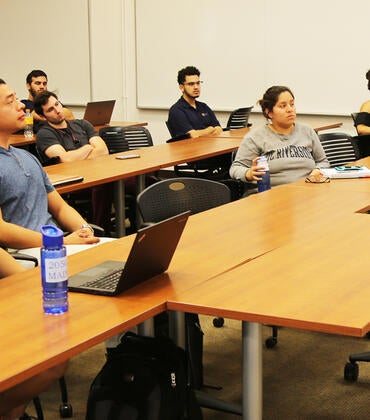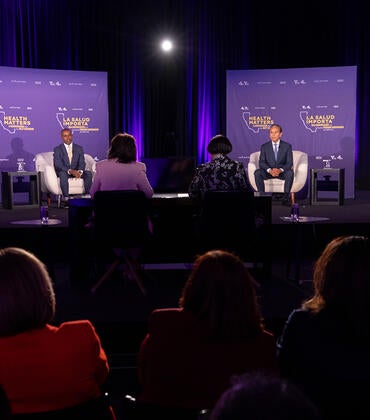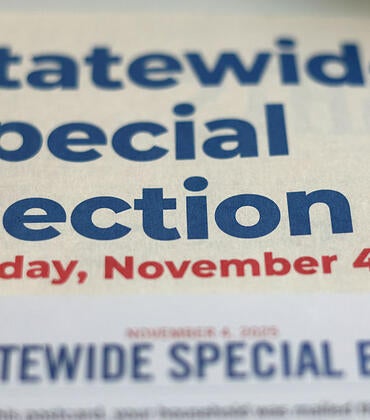
Much has happened in the two-plus months since Donald Trump reclaimed the presidency, with a start-and-stop trade war, cuts to federal research funding, and uncertainty re. the U.S. role in the Ukraine-Russia war. We asked polling and survey expert Andy Crosby, a UCR School of Public Policy professor, to weigh in on how voters are processing the developments.
Q: What do the polls say about the president’s approval ratings since he began his second term?
Crosby: A recent Reuters/Ipsos poll conducted March 31-April 2 showed that 42% of respondents approved of President Trump’s handling of his job. Of these respondents, 21% indicated they strongly approved and 21% somewhat approved.
Q: What is Trump’s support like among Republicans?
Crosby: Perhaps not surprisingly, if we explore the overall approval rating further, we find a strong partisan divide: only 7% of Democrats approved of President Trump’s handling of his job, but 84% of Republicans approved. Independents fell between Democrats and Republicans, with 36% approval.
Q: How do Americans weigh in on the economy?
Crosby: On the national economy generally, 30% of respondents indicated they believed the economy is headed in the right direction, compared to 53% who indicated they believe the economy is headed in the wrong direction (another 17% indicated they did not know). On President Trump’s handling of the economy more specifically, 37% of respondents approved of the way he is handling the economy, compared to 52% of respondents who disapprove.
Q: What do polls tell us about Elon Musk since he began heading DOGE cost-cutting efforts for the president?
Crosby: Overall, 39% of respondents indicated they have a favorable view of Elon Musk, compared to 57% of respondents who view him unfavorably. Perhaps not surprisingly, respondents’ view of Elon Musk varied considerably between political party: only 7% of Democrats have a favorable view of Musk, with 91% of Democrats holding an unfavorable view. Among Republicans, Musk is viewed quite differently: 80% of Republicans hold a favorable view, compared to only 19% who hold an unfavorable view. Independents again fall between Democrats and Republicans: 33% of independents have a favorable view of Musk.
Q: What do the polls tell us about popular support for Ukraine among Americans?
Crosby: In general, a slight majority – 52% of respondents - support providing weapons and financial aid to Ukraine. By contrast, 44% of respondents oppose providing weapons and financial aid. Like other issues, support varies by political party: 75% of Democrats support providing weapons and financial aid to Ukraine, compared to 34% of Republicans. In terms of President Trump’s handling of Ukraine more specifically, 35% of respondents indicated they approved of his handling of Ukraine, compared to 46% of respondents who disapproved. Again, responses varied considerably by political party: only 9% of Democrats supported the way the President is handling Ukraine, compared to 71% of Republicans.
Q: Thirty-three senators will run for re-election in November 2026. Are there any polls yet shedding light on where the most competitive Senate seats will be?
Crosby: In general, some of the most competitive Senate races in 2026 will likely be the states that were considered swing states in the 2024 Presidential election. There were seven swing states in the 2024 election: Arizona, Georgia, Michigan, Nevada, North Carolina, Pennsylvania and Wisconsin. Of those seven states, four have U.S. Senate elections in 2026: Georgia, Michigan, North Carolina, and Pennsylvania. I expect each state to be close, and particularly the races that do not have an incumbent candidate. For example, Democratic Sen. Gary Peters of Michigan is retiring, and as a swing state in 2024, I expect Michigan to be one of the closer races in 2026. We can look at the 2024 U.S. Senate election in Michigan as evidence: Elissa Slotkin, the junior U.S. Senator from Michigan who is also a Democrat, only won her race by an extremely narrow margin: 48.64% for Slotkin and 48.30% for her Republican challenger, Mike Rogers.
All of the above said, we are still fairly far out from the 2026 midterm elections. Although we are seeing occasional polls here and there, we are not yet to the point where we can accurately predict the midterms with polls.
Q: Ohio and Florida approval polls matter because voters in 2026 will choose replacements for Sens. J.D. Vance and Marco Rubio, respectively. What polls tell us how Florida and Ohio are trending?
Crosby: Similar to my comments above, I would use great caution when looking at 2026 polls at this point – we are still too far out to accurately predict midterms. That said, Ohio and Florida are both currently rated as Republican states by organizations such as the Cook Political Report. In the Cook Political Report, Ohio is rated “likely Republican,” which the organization notes is “not considered competitive at this point but [has] the potential to become engaged.” Florida is rated “solid Republican,” the organization’s strongest ranking, and described as “not considered competitive and…not likely to become closely contested.” Although neither state is impossible for a Democrat to win, any Democratic candidate in either state would face strong headwinds.
Editor's note: Here is where we sink into polling geekery...
Q: The polling aggregator FiveThirtyEight Is no more, as ABC shut down the operation once headed by Nate Silver. What is the legacy it leaves?
Crosby: I will use an excerpt from the 2015 Mitofsky Innovator award that Nate Silver received from the American Association for Public Opinion Research, or AAPOR, which is the leading professional association for public opinion researchers. That year, Cliff Zukin, now professor emeritus at the Rutgers Bloustein School of Planning and Public Policy and the presenter of his award, noted “…Nate Silver has made significant, innovative contributions to how journalists report, and the general public understands, presidential and congressional elections in the United States, and how public opinion polling is used in that framework.”
From my perspective, although we now have a large number of polling aggregators from which to choose (including now Nate Silver’s own Silver Bulletin, discussed in more detail below), Silver highlighted an important component of polls that still to this day is too often overlooked: the quality of the poll. As we have discussed previously on several occasions, not all polls are equal. For example, FiveThirtyEight rated polls that met AAPOR’s transparency initiative (something I have discussed in our previous conversations) as higher quality, and that helped poll consumers better understand the degree to which a poll could be trusted.
Q: Speaking of Nate Silver, now of Silver Bulletin, he launched this month a Trump approval ratings dashboard. How similar is Silver Bulletin’s approach to that of FiveThirtyEight?
Crosby: Nate Silver has indicated that the Silver Bulletin’s polling average is a “direct descendant” of FiveThirtyEight’s polling average, and uses essentially the same methodology. As I explain above, the attention to the quality of polls in calculating the polling average is a particularly important component of the average. As we navigate polls moving forward and even approach the 2026 midterms, using quality polls will be critical for our understanding of politics and policy.




